Abstract
Eighty lambs were divided into four groups, each comprising twenty animals. Half the lambs in each group were vaccinated with viable eggs and half with the activated embryos of Echinococcus granulosus, Taenia hydatigena, T. ovis or T. pisiformis. These lambs together with ten control animals were subsequently challenged with eggs of E. granulosus.
Only a few hydatid cysts were established from the challenge infection in the lambs immunized with the homologous eggs or embryos. Only one acephalocyst in one animal survived. The metabolism of this cyst was of a low order compared with that of most of those in the controls.
Hydatid cysts were established from the challenge infection almost as frequently in the animals vaccinated with eggs or embryos of the sheep metacestodes T. hydatigena and T. ovis, as in the controls. Fluid accumulated in only a few hydatid cysts from the challenge infection in those sheep vaccinated with the activated embryos of these heterologous species.
The injection of viable eggs or activated embryos of the rabbit metacestode T. pisiformis induced no resistance to the establishment or to the survival of the challenge infection of E. granulosus.
Full text
PDF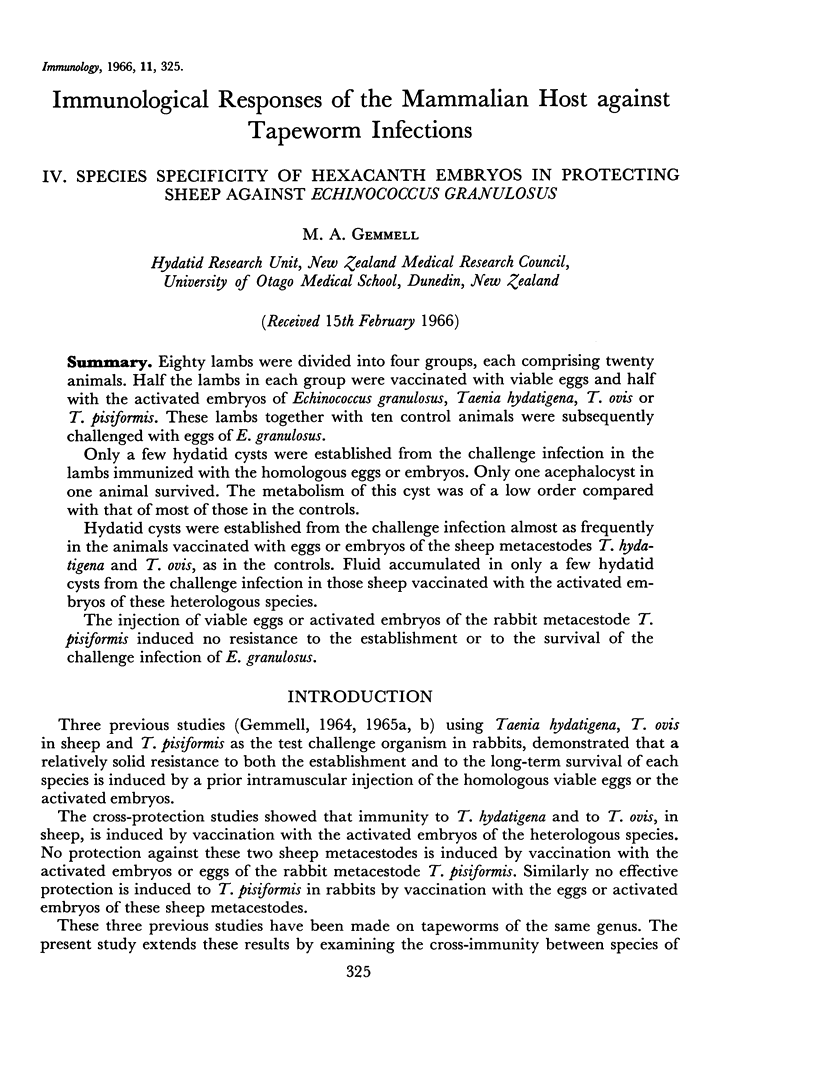
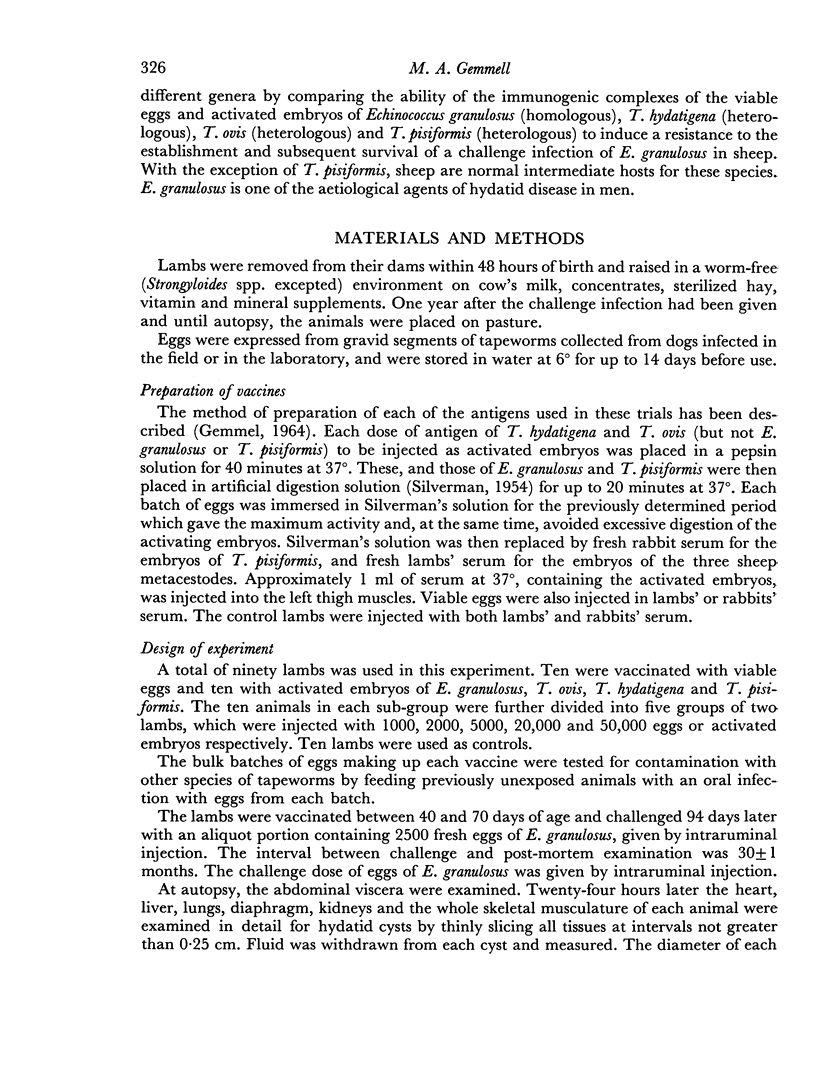
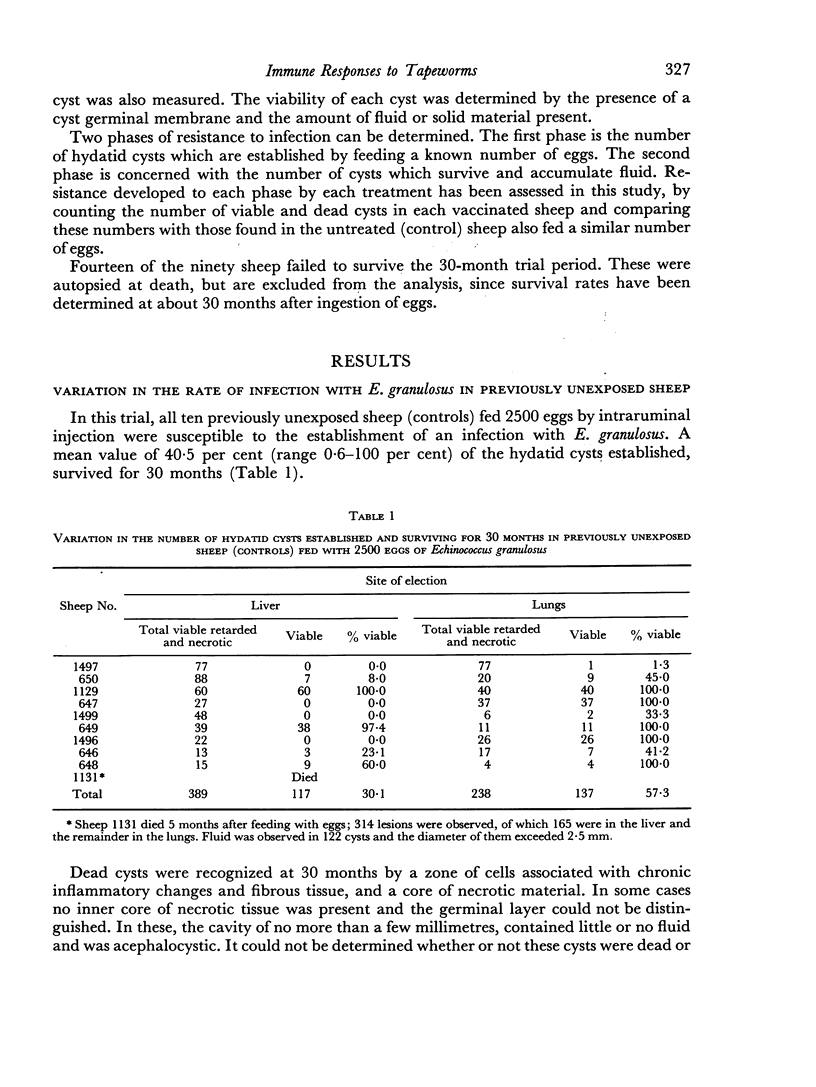
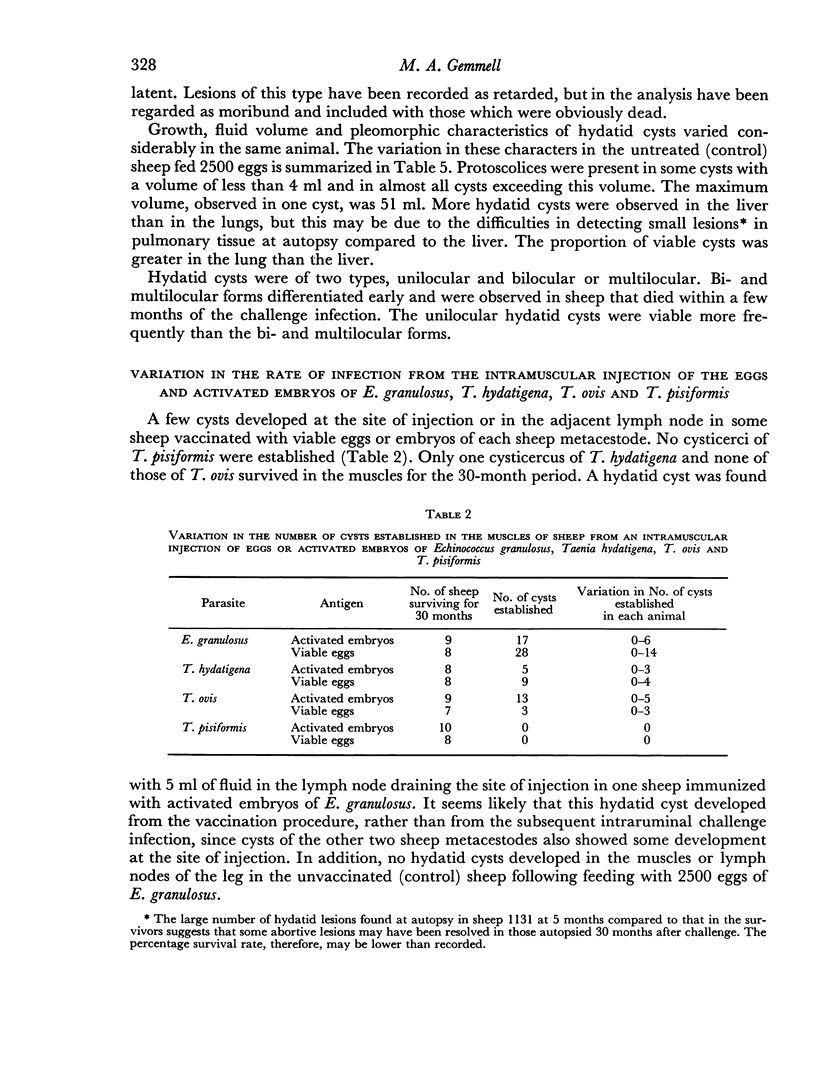
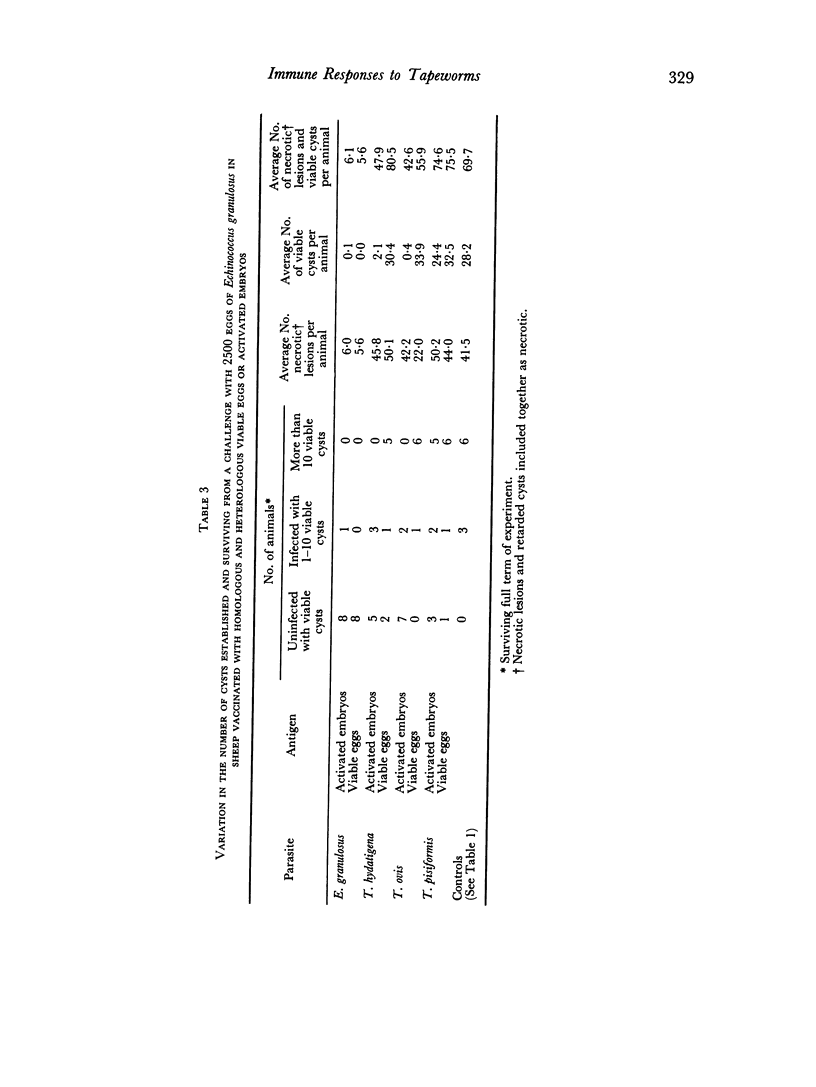

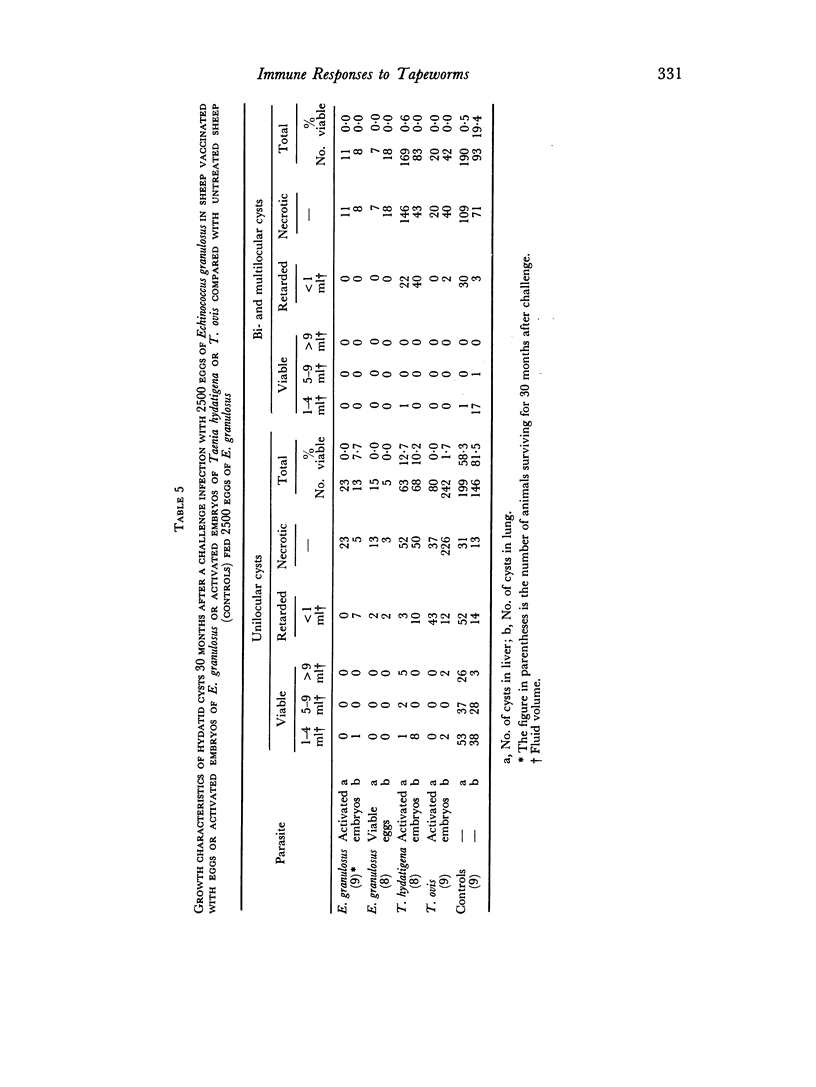
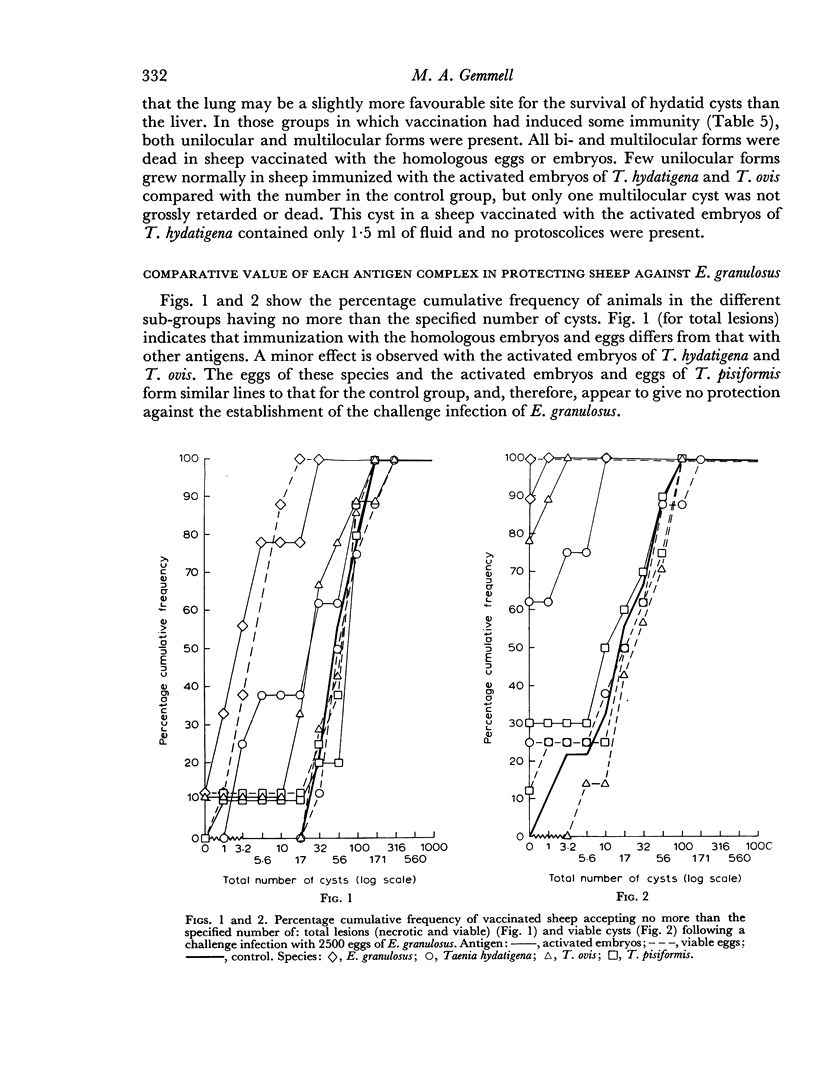
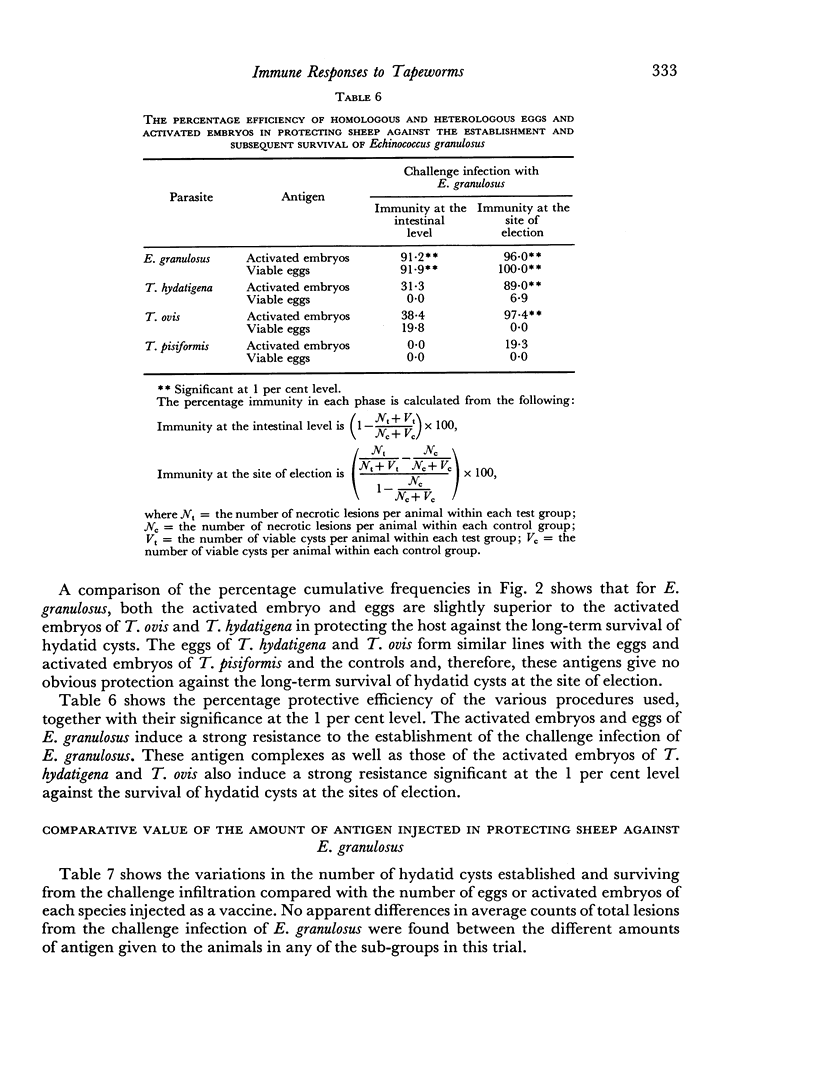
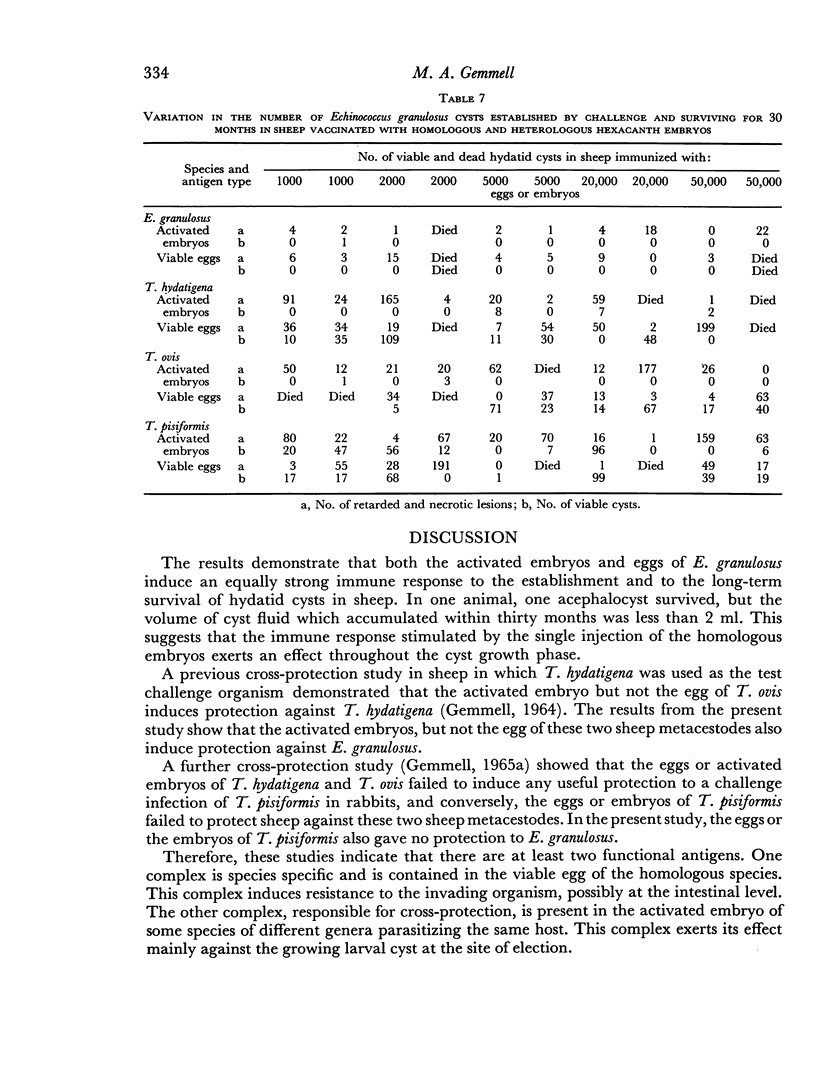
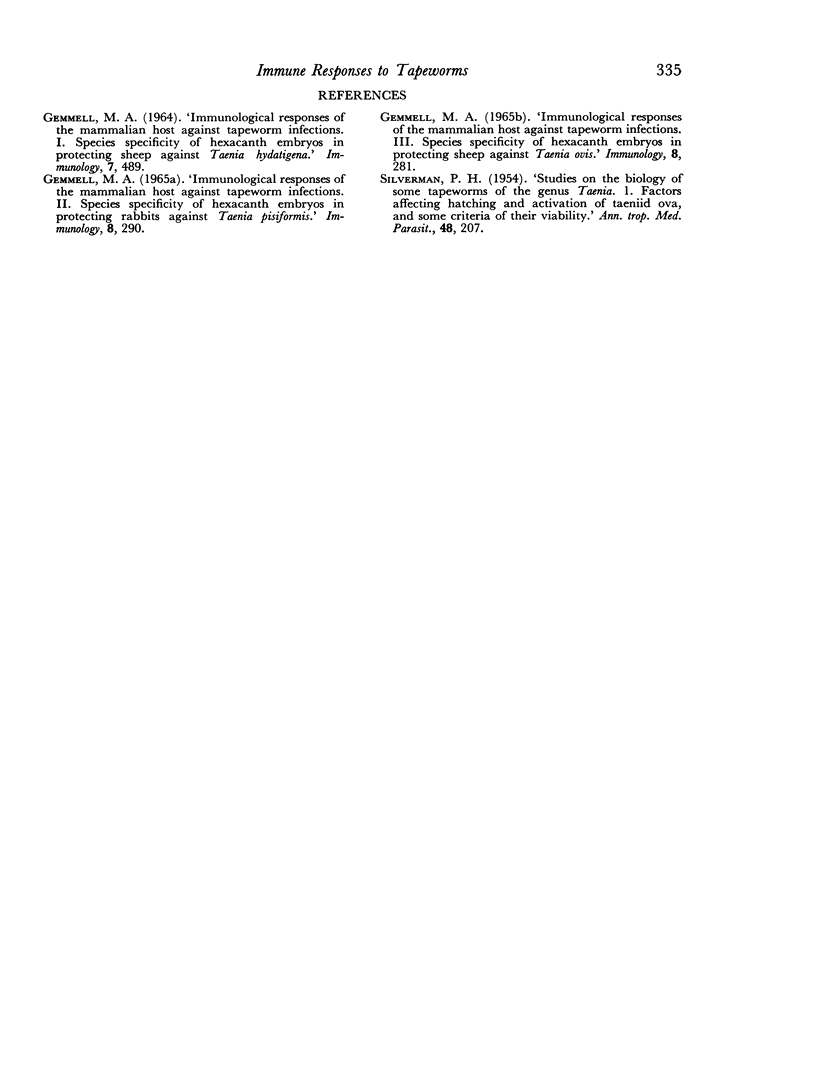
Selected References
These references are in PubMed. This may not be the complete list of references from this article.
- GEMMELL M. A. IMMUNOLOGICAL RESPONSES OF THE MAMMALIAN HOST AGAINST TAPEWORM INFECTIONS. I. SPECIES SPECIFICITY OF HEXACANTH EMBRYOS IN PROTECTING SHEEP AGAINST TAENIA HYDATIGENA. Immunology. 1964 Sep;7:489–499. [PMC free article] [PubMed] [Google Scholar]
- SILVERMAN P. H. Studies on the biology of some tapeworms of the genus Taenia. I. Factors affecting hatching and activation of taenid ova, and some criteria of their viability. Ann Trop Med Parasitol. 1954 Jun;48(2):207–215. [PubMed] [Google Scholar]


